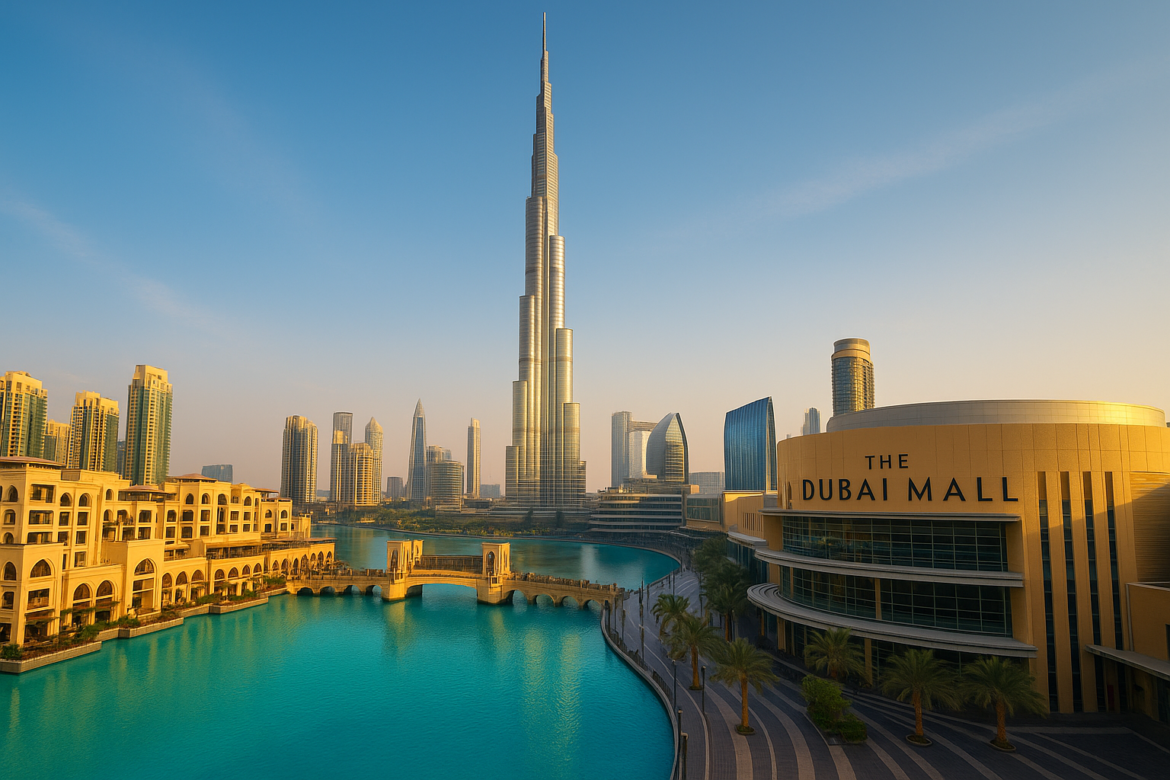Within fifty years, Dubai transformed from a small trading hub within a desert into a global economic powerhouse, attracting businesses, tourists, and investors worldwide. The emirate’s remarkable growth story is nothing short of a miracle and a testament to its visionary leadership, strategic planning, and unwavering commitment to innovation.
Dubai’s economic transformation began on December 2, 1971, when the United Arab Emirates (UAE) was founded. Prior to that, the Emirates that were later to be known as the UAE were under British rule and known as the Trucial States: Abu Dhabi, Dubai, Sharjah, Ajman, Umm Al Quwain, Ras Al Khaimah, and Fujairah. While six of the Trucial States established the UAE in 1971, Ras Al Khaimah became a part of the country in 1972.
While Sheikh Zayed bin Sultan Al Nahyan became the first President of the UAE, Sheikh Rashid bin Saheed Al Maktoum the father of the current ruler of Dubai was the pioneer Vice President and the then ruler of Dubai. It was under his visionary leadership that the foundation for the economic transformation of Dubai was laid.
Prior to independence in the 1960s, Dubai’s economy was primarily driven by trading and fishing. However, with the discovery of oil in 1966, the emirate’s fortunes began to change. Sheikh Rashid bin Saheed Al Maktoum prioritized investing heavily in infrastructure and thus laid the foundation for Dubai’s future growth.
Historically, Dubai had always been a major trading outpost being a coastal town that was strategically positioned on the route between the Middle East and the rest of Asia. As such the Dubai economy had always evolved around trade and Sheikh Rashid bin Saheed Al Maktoum’s vision was to capitalize on the comparative advantage that Dubai had in facilitating trade as a means of growing the emirate’s economy.
This led to the Sheikh initiating several infrastructure projects in the Emirates to enhance the facilitation of international trade passing through Dubai. Such infrastructure projects include Port Rashid a State-of-the-art port facility and Jebel Ali Port which is the largest man-made port in the world. He also expanded and modernized the Dubai International Airport, expanded the Dubai Creek to accommodate larger ships, built the Al Shindagha Tunnel which is the first underwater tunnel in the Middle East, and built the Dubai-Abu Dhabi Highway to improve connectivity between emirates.
To enhance trade, several policies were also implemented which include Free Trade Agreements (FTAs) with several countries, including the GCC, Singapore, and China, reduced or eliminated tariffs on many goods, streamlined customs processes through Dubai Customs, and the establishment of duty-free zones, such as Jebel Ali Free Zone, Dubai Airport Free Zone, and Dubai Silicon Oasis.
Dubai also operates a very business-friendly regulatory framework which simplifies the business setup and licensing process while 100% foreign ownership is allowed in certain sectors. They also have a Tax-Free Environment policy which means that there are no personal or corporate taxes with only oil companies being exempted from the Tax-Free policy.
Having successfully positioned itself as a strategic trading hub, in the 1990s, Dubai’s leadership recognized the importance of diversifying its economy to grow its revenue streams, and as a result of this strategic initiatives were launched to develop:
- Tourism: Dubai’s hospitality sector grew exponentially, with iconic projects like Burj Al Arab, Palm Jumeirah, and many other tourist attractions.
- Real Estate: Dubai became a hub for luxury property development, attracting international investors.
- Finance: Dubai International Financial Centre (DIFC) was established, positioning Dubai as a regional financial hub.
- Logistics: Dubai’s strategic location and investment in airports, seaports, and logistics infrastructure made it a key trade hub.
- Renewable Energy: Dubai aims to generate 75% of its electricity from clean sources by 2050.
- Dubai Internet City: A strategic hub for technology and innovation that has attracted over 1,600 companies including major tech giants such as Google, Microsoft, Oracle, HP, and IBM.
As a result of the efforts to diversify and reposition the Dubai economy, it is now the third most visited city in the world with 17 million visitors in 2023 and this number is still expected to increase with a significant 8% surge in international visitors between January and July 2024 compared to the same period in 2023. Dubai’s GDP has grown from $43 billion in 2000 to over $108 billion in 2023 while the unemployment rate at less than 1%, is one of the lowest in the world. Dubai is now also a magnet for foreign investment, with Foreign Direct Investment (FDI) inflows reaching $16.7 billion in 2020, while Dubai’s non-oil trade volumes exceed $367 billion annually.
Dubai’s economic growth is a remarkable story of visionary leadership, strategic planning, and innovation which transformed a small trading outpost in the middle of the desert into a major trading hub and one of the most popular tourist destinations in the world. As the emirate continues to evolve, its commitment to sustainability, diversification, and entrepreneurship will ensure its position as a global economic powerhouse.
Oshobi, a management consultant, development economist, and author writes from Lagos, Nigeria.

